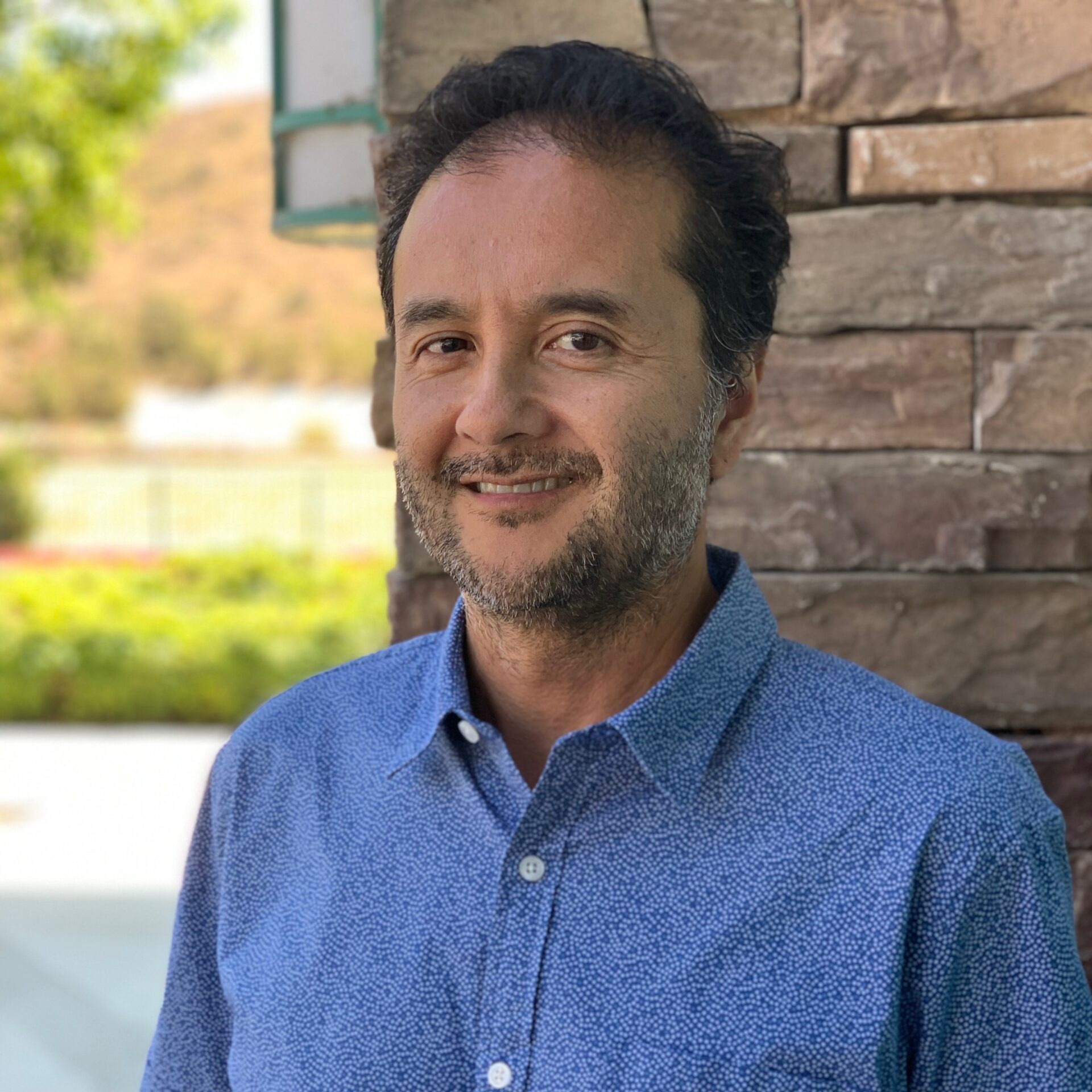Choosing Tebra
“When we first moved to an EHR 15 to 17 years ago, I went reluctantly. I didn’t know why anyone would use an EHR. I thought, okay, you need paper in case something crashes. But policy changes pushed the industry forward, because without adopting an EHR you risked losing Medicare reimbursement.
“Our first two EHR systems, Cal-Med and AdvancedMD, were okay, but clunky and hard to use. As we scaled, I needed a system to grow with us, not slow us down.
“The technology that you run your business on every day makes all the difference. When you talk about burnout, tasks like client notes, billing and charting are the type of work that will burn you out.
“If you have an EHR that’s efficient, easy to use, and intuitive, like Tebra, you can just figure it out as you go. Tebra keeps adding tools that save my team countless hours. Other systems, like AdvancedMD, just don’t work that way.
“It’s like switching smartphones. Moving from AdvancedMD to Tebra felt like going from Android to iPhone. Everything got easier, right away. It is so much easier for us to run our practice.”
Better resiliency, better growth
As a Tebra EHR customer since 2018, Arjun Reyes MD and Associates used Tebra’s Telehealth to pivot quickly to 80% virtual visits at the start of COVID. This helped the team expand its reach and serve more clients in underserved areas.
In 2025, about 40% of visits are via telehealth and 60% are in person. Since adopting Tebra, the practice has grown 67%: from 3,000 to over 5,000 clients. Dr. Reyes is opening a second office to accommodate demand.
That growth is great for clients, but adds complexity. Today the practice receives about 75 new intake calls per week, which is roughly 50% more than during COVID. The team has added a new Psychiatrist (another of Dr. Reyes’ brothers) and a Psychiatric Nurse Practitioner, and they continue to rely on technology that scales with the practice while minimizing administrative overhead.
Building trust while building a business
“We now offer more options, more treatments, more staff and more locations,” says Dr. Reyes.
Indeed, his clinic which now has two offices, stays at the forefront of innovation, offering both traditional therapy and alternative treatments such as transcranial magnetic stimulation (TMS), SpravatoⓇ, vibrasound, reiki, and other holistic modalities. Most recently, he’s introduced an anti-burnout, integrative care model that he began developing during COVID-19.
“And we have Tebra, a powerful practice management platform that helps us capture, manage and streamline our operations, so we stay nimble. In Southern California, it can take 6 to 8 weeks to see an MD. Here, if someone contacts us on Friday, we can schedule them for the following Tuesday,” adds Dr. Reyes.
“Tebra also helps us build trust through feedback and reviews,” says Brenda Sagastume. “All patients now receive a satisfaction survey. We follow up on patient concerns to improve care, and we post verified reviews online. We went from just five reviews to more than 230, and our ratings improved from about 2.75 to 4.5 out of 5.
“Scheduling is another benefit. I like that we can automatically send appointment reminders up to two hours before a visit. But it’s also great to make modifications for clients who don’t need or want that much communication. Tebra works for everyone.
“The Tebra patient portal is also very nice for our patients, empowering them to: message us, view bills, request records, and upload documents at any time. For our team, everything is in one secure and HIPAA-compliant place. It strengthens communication and trust,” adds Sagastume.
AI extends technology value
Tebra’s AI Note Assist is reshaping Dr. Reyes’ workflow. When the practice first switched to Tebra, he and his providers each saved an hour a day by moving from hand-written case notes to electronic documentation.
With AI Note Assist, which records, organizes and suggests potential treatment ideas and research, Dr. Reyes reports saving an additional 10-15 minutes per client. With an average of 20 clients per day, that is 3 to 5 hours saved per provider each day. For a team of 8-providers the time savings can exceed $750,000 per year in staff costs.
“AI Note Assist is amazing!” says Dr. Reyes. “In psychiatry and psychology, histories and notes rarely follow a fixed order. Patients tell their stories as they think of them. Once you finish a session, you need to organize that in a note format. Tebra’s AI does that for you.
“Talking about burnout, using AI Note Assist alone could keep me from retiring. Note-taking is very tedious. With Tebra, I get transcription, organization, and ideas for a working diagnosis, medication background and research. Most of all, I get time. Now, I spend an hour a day reviewing literature to find better options for my clients. That time makes you a better healer, a better provider and a better person. Doing the right thing for them, trickles down to everything.
“I always tell patients to control the controllables. Your time writing notes is something you can control. Use AI, reduce burnout, and keep doing the work you love!”
Supporting the support team
Brenda Sagastume joined Dr. Reyes’ practice 23 years ago. Today she manages a support team of five full-time and two part-time employees and she trains new team members on Tebra.
“I’m a visual, hands-on person,” she says. “The first thing I teach new employees is how to add a new client to Tebra’s scheduling calendar. It’s simple: enter first name, last name, date of birth, then follow the prompts. Tebra guides you and shows what is next and what needs to be fixed. With Tebra, you can’t make mistakes.
“Our staff picks it up really quickly, from scheduling to posting bills. I don’t use the manual. It’s so intuitive I don’t need it.”
Lessons learned
“My advice to other providers: be truly open to change,” says Dr. Reyes.
“Doctors in their 50’s and 60’s get set in their ways. They don’t want to change anything anymore. While I am always fascinated about new and emerging treatment options, when it comes to operations, at first, I even said ‘what’s this AI thing?’
“But I have built trust in Tebra. They interview people like me, and try to figure out how they can continue to improve their system for us. When they improve something in the system, and send it to me, I’m gonna try it.
“I don’t know how many providers are using AI right now, but I’m sure it’s not 100%. Now that I have, I say 100% should use it. They should try it. Use it for a month. Really feel the impact of it. Then, you’ll know.
“Tebra cares how we use their system, and how efficient we become, and how we can improve patients’ lives. So, that’s my suggestion. Whatever Tebra comes up with: AI Note Assist or some other version of AI, or some other version of something else. Use it. I mean, it: chances are it’s going to be very helpful.”
Cost savings breakdown*
Based on:
Psychiatrists (Southern California avg): $120/hr
Psychologists: $100/hr
Psychiatric NPs: $80/hr
Admin staff: $30/hr
Average reimbursement per visit: $150
Cost Driver |
Annual Savings |
AI-powered note-taking (3–5 hrs/day × 8 providers) |
$750,000 |
Reduced no-shows via scheduling reminders |
$600,000 |
Streamlined EHR workflows vs. legacy systems |
$160,000 |
Automated review management (230+ reviews) |
$4,800 |
Scheduling & rescheduling efficiency |
$18,750 |
Total Avoided Costs & Preserved Revenue |
$1.6M+ annually |


